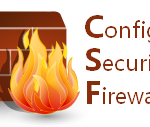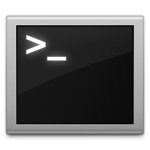If you run the CSF/LFD firewall on your server then you’ve no doubt seen the emails complaining about high resource usage for various accounts. This small tutorial will show you how to minimize them.
What does it mean?
Simply, it means that the process is using more resources than allowed.
Is it safe to change the default settings for it?
This is up to you – more than likely, if you’re searching for the term “Excessive resource usage”, then you are getting hammered with emails – which is actually worse because you’ll be numb to the alerts and won’t react if something really is going wrong (or won’t notice it because of all of the other email/alerts coming in all the time).
There are three thing you can do:
1. Disable the check
2. Modify the check
3. Ignore certain users/commands that frequently send resource emails
1. Disable:
If you want to disable the check (we recommend you modify it instead – since you actually DO want these emails.. if they’re real), simply edit /etc/csf/csf.conf and change:
|
1 |
PT_USERMEM = "200" |
to:
|
1 |
PT_USERMEM = "0" |
2. Modify:
If you would like to modify the check (we recommend), simply edit /etc/csf.csf.conf and change:
|
1 |
PT_USERMEM = "200" |
to:
|
1 |
PT_USERMEM = "300" |
This will raise the limit from 200mb to 300mb. You can put whatever you want there.. but you want to put it a little higher than what you’re seeing come through as your false positives.
3. Ignore certain users/commands:
If you want to ignore certain users or commands, then you would edit /etc/csf/csf.pignore and add a line for each user or command.
If you get an ‘excessive resource usage’ email that looks like:
|
1 2 3 4 5 6 7 8 |
Time: Sat Aug 2 08:00:12 2014 -0400 Account: nrpe Resource: Process Time Exceeded: 2669 > 1800 (seconds) Executable: /usr/sbin/nrpe Command Line: /usr/sbin/nrpe -c /etc/nagios/nrpe.cfg -d PID: 1541 (Parent PID:1541) Killed: No |
And you know it’s ok.. then you can ignore either the user or the command. In this case, the line could be:
user:
|
1 |
user:nrpe |
or.. command:
|
1 |
exe:/usr/sbin/nrpe -c /etc/nagios/nrpe.cfg -d |
With any of the above, always restart csf and lfd when done:
|
1 2 |
csf -r service lfd restart |








